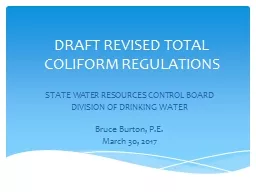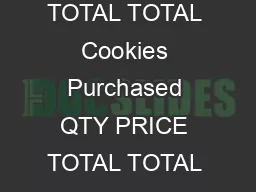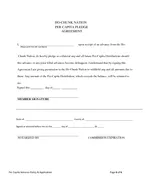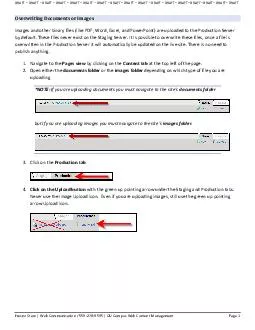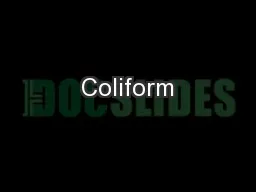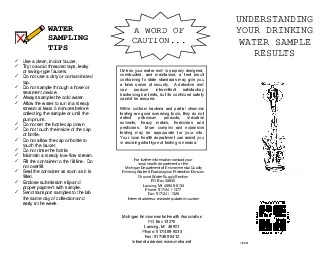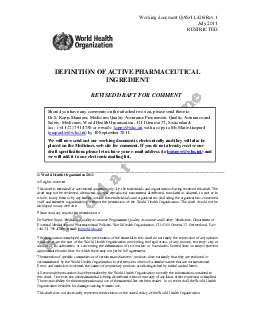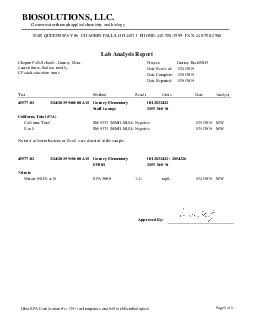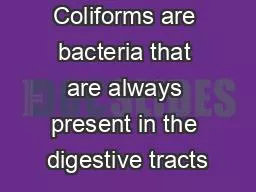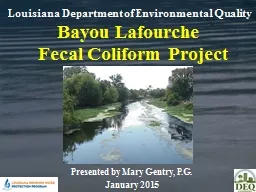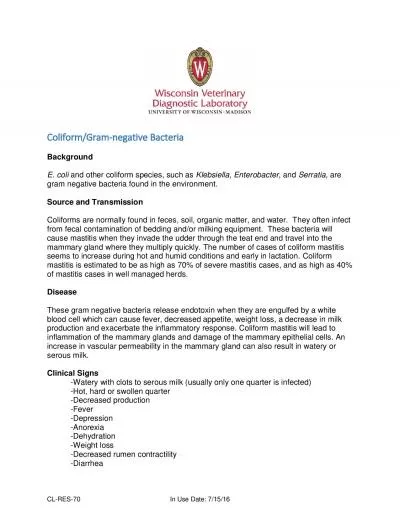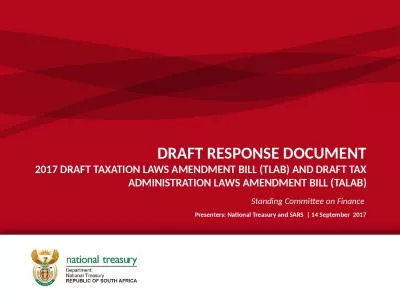PPT-DRAFT REVISED TOTAL COLIFORM REGULATIONS
Author : trish-goza | Published Date : 2018-09-24
STATE WATER RESOURCES CONTROL BOARD DIVISION OF DRINKING WATER Bruce Burton PE March 30 2017 CA Draft RTCR Federal RCTR Current more stringent CA TCR Requirements
Presentation Embed Code
Download Presentation
Download Presentation The PPT/PDF document "DRAFT REVISED TOTAL COLIFORM REGULATIONS" is the property of its rightful owner. Permission is granted to download and print the materials on this website for personal, non-commercial use only, and to display it on your personal computer provided you do not modify the materials and that you retain all copyright notices contained in the materials. By downloading content from our website, you accept the terms of this agreement.
DRAFT REVISED TOTAL COLIFORM REGULATIONS: Transcript
Download Rules Of Document
"DRAFT REVISED TOTAL COLIFORM REGULATIONS"The content belongs to its owner. You may download and print it for personal use, without modification, and keep all copyright notices. By downloading, you agree to these terms.
Related Documents

